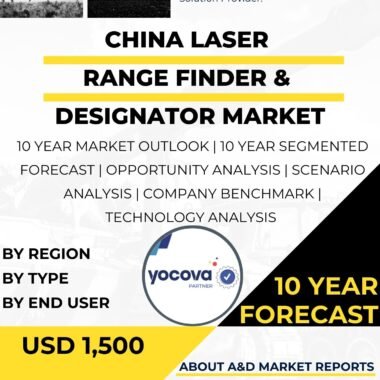Description
The large caliber ammunition market in France occupies a distinctive position within the country?s broader defense industry, reflecting a long tradition of land warfare expertise and a continuous investment in heavy weapons technology. Large caliber ammunition refers primarily to munitions used by armored vehicles, artillery systems, and heavy naval guns, all of which are integral to both national defense and allied operations under collective security frameworks. In France, the development and production of this category of ammunition are shaped by a mixture of historical legacies, modern industrial capabilities, and the demands of evolving strategic environments. Unlike small arms ammunition, which emphasizes mass production and ubiquity, large caliber ammunition is characterized by complexity, precision, and adaptability to advanced weapons platforms. Its market reflects the nation?s dual commitment to maintaining strategic autonomy while supplying advanced munitions to partners abroad.
The historical evolution of the French large caliber ammunition market is central to its present character. France has been involved in artillery innovation for centuries, with its military leaders recognizing the decisive role of heavy firepower in both offensive and defensive operations. During the twentieth century, especially through the two World Wars, French engineers and manufacturers honed expertise in developing shells that combined destructive effects with reliable performance across different terrains. After the mid-century reorientation of the French defense industry, the market shifted toward ensuring compatibility with modern armored vehicles and standardized alliances while also protecting uniquely French design approaches. This tension between national specialization and international interoperability still defines the sector today.
Key players dominate the French large caliber ammunition landscape, bringing together expertise in propellant technologies, metallurgy, explosives, and precision engineering. Major state-aligned defense firms lead in the production of artillery shells, tank munitions, and naval ordnance. These companies often integrate ammunition development with broader weapons platform projects, such as main battle tanks or self-propelled artillery systems, ensuring that both the munition and the firing system are optimized together. Alongside these primes, there are specialized firms that focus on propellants, casing design, and detonation mechanisms, as well as research institutes dedicated to energetic materials. The presence of a well-established French supply chain means that even highly customized ammunition types can be developed domestically, reinforcing the policy of defense sovereignty. At the same time, contractual collaborations with other European partners allow for cross-border design efforts that align French ammunition with multinational platforms.
From an economic perspective, the large caliber ammunition market represents both a strategic industry and a source of high-value employment. The design and manufacture of shells and projectiles encompass a wide spectrum of technical competencies, from metallurgy and chemical engineering to ballistics modeling and quality assurance. Each round of ammunition is highly engineered, intended not only for basic destructive effect but for specialized outcomes such as armor penetration or area suppression. This complexity sustains demand for research and development, ensuring that French engineers remain at the forefront of material sciences and explosives safety. Furthermore, the market sustains an important defense export component. International customers who acquire French artillery, armored vehicles, or naval systems frequently purchase compatible ammunition packages, reinforcing the export attractiveness of French weapons platforms. In this way, the ammunition market acts as both a supplement to, and beneficiary of, broader defense exports.
The cultural and strategic characteristics of large caliber ammunition in France cannot be separated from the concept of operational independence. Since France asserts the importance of strategic autonomy in defense matters, the country has taken steps to ensure secure access to its own stockpiles of heavy munitions. This encompasses both wartime surge capacity and peacetime innovation efforts. By maintaining a domestic market, France insulates itself from potential supply chain disruptions and ensures that technology developed within its industry can be tailored specifically to national doctrine. French defense planners emphasize versatility in weapons systems, and this is reflected in the ammunition market where high-explosive, armor-piercing, and programmable fuses are all in steady demand. The diversity of ammunition types highlights the need for French forces to operate in varied theaters, from urban battlefields to open terrain to maritime engagements.
In terms of trends, the French large caliber ammunition market has increasingly moved toward greater precision and adaptability. Systems once reliant on unguided shells have gradually incorporated innovations that increase accuracy and reduce collateral damage. Programmable ammunition, capable of detonating at pre-set distances or in response to particular battlefield conditions, has become a major driver for industry development. This reflects France?s wider commitment to aligning military technology with international humanitarian law, ensuring destructive power is paired with precise targeting where possible. Simultaneously, trends in survivability and armor protection have propelled the development of improved armor-piercing ammunition with advanced penetration technologies, designed for effectiveness against modern armored threats.
Another prominent trend in the French large caliber ammunition sector concerns sustainability and logistics. Traditional munitions production has long been associated with environmental and safety challenges due to the use of heavy metals, propellants, and explosive agents. The modern market in France has responded by introducing more environmentally conscious production methods, while also experimenting with new energetic materials that reduce toxicity without sacrificing effectiveness. Additionally, improving the shelf life, transport safety, and adaptability of ammunition to different climatic conditions represents an ongoing industrial priority. Logistical efficiency remains a hallmark of the French defense approach, and the ammunition market now mirrors this by emphasizing packaging innovations, storage techniques, and reliability under varied operational stresses.
The market has also been shaped by the increasing role of digitalization and networked warfare. In France, ammunition is no longer viewed as an isolated munition but as part of a broader weapon system integrated into real-time battle management networks. For instance, programmable ammunition requires coordination between fire control systems, sensors, and data-sharing platforms. This interconnectivity ensures that French armed forces can conduct synchronized operations with maximum efficiency and adaptability. As a result, industrial actors in the French market are investing not only in the chemistry and ballistics of ammunition but also in the software and electronics that govern their deployment.
France?s participation in multilateral defense organizations has further influenced its large caliber ammunition market. Ensuring interoperability with allied forces while sustaining a distinct French design philosophy remains an ongoing balancing act. Ammunition used by French artillery or armored platforms may need to align with joint training exercises, ensuring smooth logistical support when deployed alongside allies. At the same time, retaining certain proprietary designs gives France strategic leverage and preserves its export competitiveness. The European collaboration environment has also given rise to research initiatives focused on common ammunition standards, in which France is an active participant, thereby reinforcing the dual goals of independence and cooperation.
Challenges persist within the French large caliber ammunition market despite its strengths. The development of advanced munitions requires long lead times, significant budgets, and meticulous testing regimes. Ensuring quality and safety is paramount, given that any failure could have significant battlefield consequences. Moreover, market trends increasingly demand customization, requiring manufacturers to offer a variety of ammunition tailored to different weapons systems and theaters of operation. Meeting this demand while avoiding cost overruns can be difficult. Export dynamics also present certain challenges, since international competition in large caliber ammunition production is intense and often influenced by political considerations. Balancing France?s industrial priorities with shifting global demands requires careful coordination between manufacturers and state policymakers.




